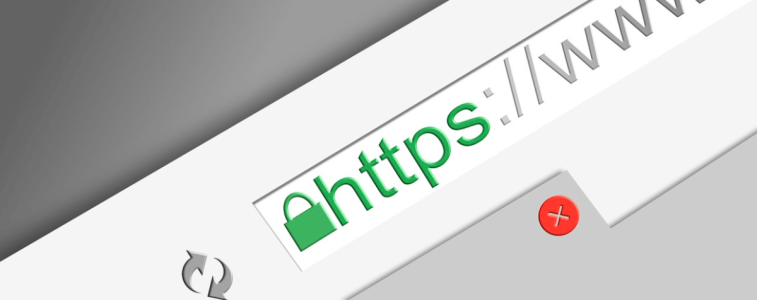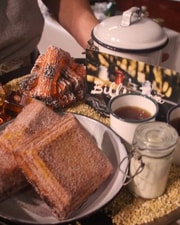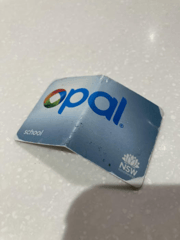Fake websites are on the rise! The latest victim? Domino’s
- Replies 1
As we all know, the internet is a powerful tool offering abundant opportunities to engage with the world. It has never been easier to stay informed and entertained, pay bills, and of course, indulge our shopping desires.
However, with great power comes great responsibility; unfortunately, not every individual out there uses theirs for good.
Such is the case with elaborate online scams we have recently heard about targeting Australian pizza lovers, leaving them without their dinner and, more shockingly, hundreds of dollars out of pocket.
Hungry customers, excitedly placing their orders for a delicious meal from Domino's, were horrified to discover they had been ordering from a fake website carefully designed to mimic the real one—with some victims losing as much as $800!

Domino's informed a news source that they had promptly reported the deceitful site when they became aware of its existence.
The counterfeit web page was almost identical to the official Domino's site but with deceptive alterations—such as swapping the letter 'i' with a 'j' in the web address and not offering options to pay in-store or use PayPal.
One victim took to Facebook to warn fellow unsuspecting pizza enthusiasts: 'I googled it and clicked on the very first results, which took me to this website. I went through their menu and selected a few pizzas, and then I wondered why there was no option for paying via PayPal. Then I saw the website address.'
This is not an isolated incident, as several other well-known businesses have also become victims of these deceptive tactics.
A recent report revealed that NAB had warned its customers after uncovering a scheme in which scammers were developing fake websites that impersonated the bank.
According to NAB, these scammers had constructed fraudulent NAB-branded websites, including NAB Connect for business banking, to deceive customers into unwittingly downloading harmful software.
For the complete story, you can click on this link.

In today's digital landscape, exercising caution while engaging in online shopping is more crucial than ever. Although counterfeit websites may bear a striking resemblance to their authentic counterparts, it is imperative to remain vigilant and recognise certain indicators.
Here are a few vital tips to keep in mind:
Carefully verify the URL: Fraudulent websites often employ web addresses that closely resemble legitimate ones, with slight variations such as substituting a '0' for the letter 'O'.
Look for secure payment options: Reputable websites typically offer a range of secure payment methods, including options like PayPal.
Scrutinise the site's design: Imitation sites frequently exhibit subtle discrepancies or unconventional elements that fail to replicate the authentic experience.
Seek out customer reviews: Conduct a quick search for reviews, comments, or complaints to illuminate potential risks associated with a specific seller or webpage.
Incorporating these essential guidelines into your online shopping routine can enhance your ability to identify and avoid fraudulent websites. This will help safeguard your personal information and ensure a secure browsing experience.
A valuable resource in this regard is Scamwatch, an initiative backed by the Australian Government that devotes a section specifically to fake websites, as they are a popular tactic that criminals employ.
For more information on recent scams and frauds, you can also browse the Scam Watch forum on the SDC website. It is always beneficial to stay informed about these matters!

Members, as you enjoy the convenience of online shopping from your favourite stores, remember to keep your wits about you and stay vigilant. Let's not allow these virtual tricksters to rain on our online shopping parade. Stay safe and happy shopping!
Have any of you ever encountered fraudulent websites or deceptive social media pages? If so, we'd love to hear about your experiences and any tips you may have for determining the authenticity of online content. Please share your insights with us in the comments below!
However, with great power comes great responsibility; unfortunately, not every individual out there uses theirs for good.
Such is the case with elaborate online scams we have recently heard about targeting Australian pizza lovers, leaving them without their dinner and, more shockingly, hundreds of dollars out of pocket.
Hungry customers, excitedly placing their orders for a delicious meal from Domino's, were horrified to discover they had been ordering from a fake website carefully designed to mimic the real one—with some victims losing as much as $800!

The victims believed they were placing an order for dinner at Domino's, only to discover that they had unintentionally landed on a fraudulent webpage. Credit: Shutterstock.
Domino's informed a news source that they had promptly reported the deceitful site when they became aware of its existence.
The counterfeit web page was almost identical to the official Domino's site but with deceptive alterations—such as swapping the letter 'i' with a 'j' in the web address and not offering options to pay in-store or use PayPal.
One victim took to Facebook to warn fellow unsuspecting pizza enthusiasts: 'I googled it and clicked on the very first results, which took me to this website. I went through their menu and selected a few pizzas, and then I wondered why there was no option for paying via PayPal. Then I saw the website address.'
This is not an isolated incident, as several other well-known businesses have also become victims of these deceptive tactics.
A recent report revealed that NAB had warned its customers after uncovering a scheme in which scammers were developing fake websites that impersonated the bank.
According to NAB, these scammers had constructed fraudulent NAB-branded websites, including NAB Connect for business banking, to deceive customers into unwittingly downloading harmful software.
For the complete story, you can click on this link.

Fraudulent websites frequently use web addresses that resemble legitimate ones, employing subtle variations such as substituting one letter for another. Credit: Pixabay.
In today's digital landscape, exercising caution while engaging in online shopping is more crucial than ever. Although counterfeit websites may bear a striking resemblance to their authentic counterparts, it is imperative to remain vigilant and recognise certain indicators.
Here are a few vital tips to keep in mind:
Carefully verify the URL: Fraudulent websites often employ web addresses that closely resemble legitimate ones, with slight variations such as substituting a '0' for the letter 'O'.
Look for secure payment options: Reputable websites typically offer a range of secure payment methods, including options like PayPal.
Scrutinise the site's design: Imitation sites frequently exhibit subtle discrepancies or unconventional elements that fail to replicate the authentic experience.
Seek out customer reviews: Conduct a quick search for reviews, comments, or complaints to illuminate potential risks associated with a specific seller or webpage.
Incorporating these essential guidelines into your online shopping routine can enhance your ability to identify and avoid fraudulent websites. This will help safeguard your personal information and ensure a secure browsing experience.
A valuable resource in this regard is Scamwatch, an initiative backed by the Australian Government that devotes a section specifically to fake websites, as they are a popular tactic that criminals employ.
For more information on recent scams and frauds, you can also browse the Scam Watch forum on the SDC website. It is always beneficial to stay informed about these matters!
Key Takeaways
- Hungry pizza lovers have been ripped off by scammers in an elaborate scheme, with one woman losing over $800.
- The victims thought they had been ordering dinner from Domino's, only to find they'd landed on a fake webpage.
- Regular Domino's customers reported the same issue, with some realising too late and losing money.
- Scamwatch, run by the Australian Government, is dedicated to fake websites, advising consumers to be cautious of the payment method and to double-check web addresses.
Members, as you enjoy the convenience of online shopping from your favourite stores, remember to keep your wits about you and stay vigilant. Let's not allow these virtual tricksters to rain on our online shopping parade. Stay safe and happy shopping!
Have any of you ever encountered fraudulent websites or deceptive social media pages? If so, we'd love to hear about your experiences and any tips you may have for determining the authenticity of online content. Please share your insights with us in the comments below!







